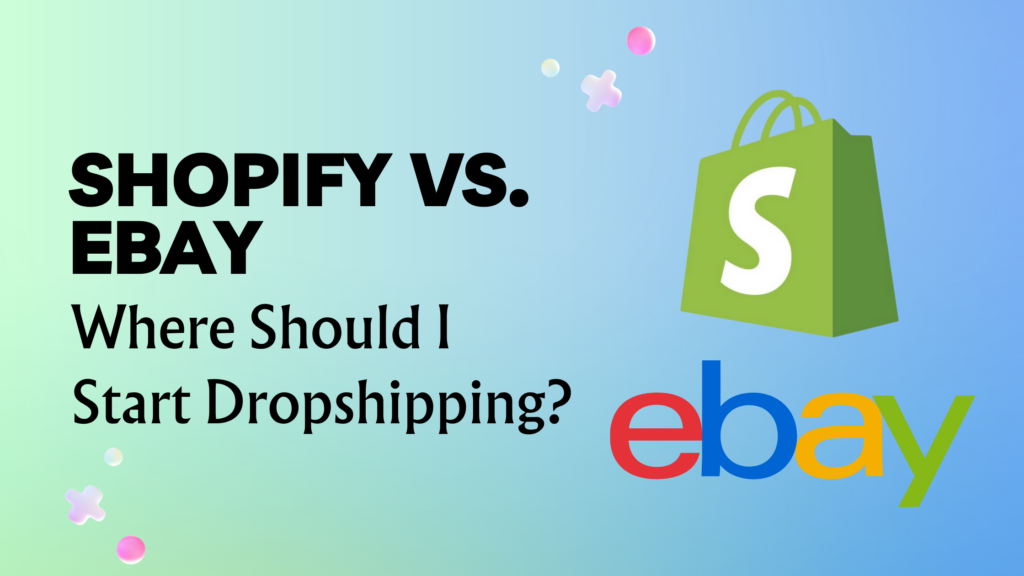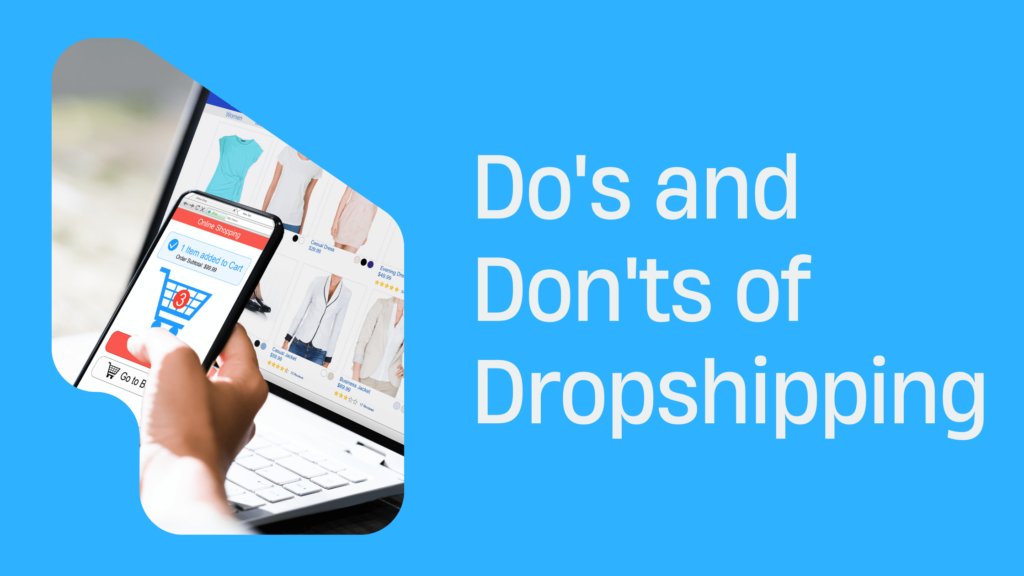Shopify vs. eBay: Where Should I Start Dropshipping?
Dropshipping is a retail fulfillment method where a store doesn’t keep the products it sells in stock. Instead, when a store sells a product, it purchases the item from a third party and has it shipped directly to the customer. As a result, the merchant never sees or handles the product. This business model offers several advantages, including low startup costs, minimal inventory management, and the ability to operate from anywhere with an internet connection.
Shopify eBay dropshipping serves as the core business model for entrepreneurs looking to enter the ecommerce space without the burden of managing inventory. The blog aims to compare and contrast two popular platforms, Shopify vs eBay, to help aspiring dropshippers determine the best platform to kickstart their dropshipping venture.
Growing Popularity of Dropshipping as an Entrepreneurial Venture
The growing popularity of dropshipping as an entrepreneurial venture has been propelled by the ease of entry and the allure of passive income streams. With platforms like Shopify and eBay dominating the ecommerce landscape, aspiring entrepreneurs are presented with compelling opportunities to delve into the world of online retail. The debate over Shopify vs eBay for dropshipping has intensified, with each platform offering distinct advantages and challenges.
While Shopify provides a user-friendly interface and robust tools for building and scaling an independent online store, eBay boasts a vast marketplace with an established customer base. Entrepreneurs navigating the Shopify eBay dropshipping dilemma often find themselves weighing factors like ease of use, market reach, and competition levels to determine the optimal platform for their venture. As more individuals seek guidance on how to start dropshipping on eBay or Shopify, the demand for comprehensive comparisons and insights into these platforms continues to rise.
Shopify and eBay as Ecommerce Platforms
In the vast world of ecommerce, Shopify and eBay stand out as two prominent platforms offering distinct opportunities for aspiring dropshippers. When considering “Shopify vs eBay” for dropshipping ventures, understanding the unique characteristics of each platform is essential. Shopify, an inclusive ecommerce solution, empowers entrepreneurs to create customizable online stores with ease. On the other hand, eBay, as a renowned online marketplace, provides a vast audience and simplified selling processes. Whether you’re intrigued by the simplicity of Shopify dropshipping or curious about how to start dropshipping on eBay, this comparison aims to illuminate the path forward in your ecommerce journey.
Shopify vs. eBay
Creating an online store on Shopify (or any platform) vs. selling on eBay (or any marketplace) is a question of two different business models that both have their advantages and disadvantages. Here are some things you should consider when making your decision:
1. Driving Traffic
Shopify is one of the easiest ecommerce platforms to get up and running, and you can create a store that looks great in a matter of a day. But it is important to understand that having a nice looking store with loaded products does not guarantee traffic. Investing time and effort into marketing your store and driving traffic to it is essential. There are multiple ways to drive customers to your store: Google/Facebook ads, keyword rich blog posts, accurate product descriptions for SEO, digital community building (such as posting on Quora), and more. However, this will take time and money, whereas on eBay there is already traffic and an audience looking for your products. eBay spends millions of dollars to drive traffic to their site, and you can benefit from that by listing your products. But with that traffic that eBay provides, comes a price.
2. Payment and Fees
Shopify’s cheapest plan starts at $29/month for an online store and has 2.9% + 30 cents credit card transaction fees if you use their Shopify payments. No other fees are applied if you use their Shopify Payments (which is essentially the Stripe payment processor). The basic plan comes with the ability to list an unlimited amount of products in your store.
eBay does not have a monthly fee, however, they have what they call “insertion fees” and “final value fees”, which means they charge you for each product you want to list (insert). They will also charge you a percentage of the final sale value of the product. There are also fees for choosing a special duration of listings, multiple categories, and other advanced listing fees. eBay fees can stack up rather quickly to outweigh the fact that there is no monthly fee to have an account.
3. Competition and Saturation
When searching through the comparison of Shopify vs. eBay for dropshipping endeavors, it’s crucial to evaluate the level of competition and saturation within each marketplace. Shopify, with its customizable online stores, offers a relatively lower level of competition compared to eBay’s vast online marketplace. While eBay boasts a larger audience and diverse product categories, it also faces higher saturation levels, making it challenging for new sellers to stand out.
Conversely, Shopify’s more niche-oriented approach allows for targeted marketing and potential differentiation in a less saturated environment. Understanding the dynamics of competition and saturation on both platforms is essential for aspiring dropshippers looking to carve their niche and thrive in the ecommerce landscape.
4. Integration and Scalability
When comparing “Shopify vs eBay” for dropshipping endeavors, understanding their integration capabilities and scalability becomes imperative. Shopify, renowned for its user-friendly interface and extensive app store, offers seamless integration with various tools and services, enabling dropshippers to enhance their store functionalities effortlessly. Moreover, Shopify’s robust infrastructure ensures scalability, allowing businesses to expand their operations and cater to growing demands with ease.
Conversely, while eBay provides a vast marketplace for dropshipping, its integration with external tools may not be as extensive as Shopify’s ecosystem. However, eBay’s scalability options enable sellers to reach a broad audience and capitalize on the platform’s established customer base. Ultimately, weighing the integration and scalability aspects of Shopify and eBay is crucial in determining the optimal platform for dropshipping ventures.
5. Customer Retention
The biggest drawback to selling primarily on eBay is that you are not building a relationship between your brand and your customer. eBay is a marketplace of products where customers are driven by finding a product from a seller they can trust. Shopify is a retail shop in which customers are driven by trusting the shop/brand and buying the products that they trust the retailer to list on their store.
Think of it this way. People like to head directly to a certain apparel store in a mall because they know they will have the clothes they like and will also find clothes that they didn’t even know existed that they will also enjoy. This is because that store/brand has a relationship and understanding of their buyer and seeks to provide them with the products they are looking for. The equivalent of eBay in the offline world would be if you took all the stores in the mall and moved their products into the middle of the food court and then organized them by product type.
You would go to the mall looking for a shirt, and the supplier of that shirt would be standing behind it saying you can trust me because I have “x” number of reviews, while that same shirt would be hanging right next to it with another supplier saying the same thing, maybe with more or fewer reviews. So think of the next time that customer is looking for a shirt. They are not going to walk into your store, you will just have to hope they find you again in the sea of shirts- that is the difference in selling in a marketplace vs. a store.
So when getting started, sure you can do both. Maybe eBay is a good way to start getting sales in the short term to build momentum. On the other hand, Shopify (or any online store) is going to be tougher to gain traction, but a long-term and more sustainable business model.





